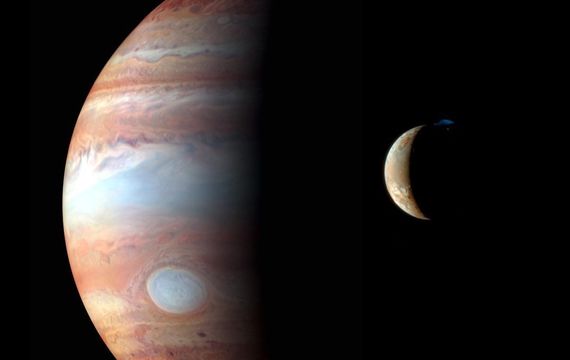The planets are the right place to start. The motions of the six planets of our solar system that are visible to the naked eye have had a profound influence on humankind’s contemplation of the cosmos. The planets were the spark that liberated the human spirit from a religious - mythical worldview, gradually paving the way for a scientific conceptualization of the world based on rational laws we can discover. This has been an immensely enriching chapter in our history, in which we are still immersed. I call it a gift to humanity which we should use wisely. Moreover music and science have gone hand in hand for a good part of this journey, emerging from a feel of wonder and refining each other’s language to capture the world. Pythagoras’s music of the spheres. Musica Universalis.
Now the very first revolution in our thinking about the planets occurred in what is today the Western part of Turkey, in Milete, in the 6th century before Christ, where Anaximander was the first to see the Earth as a planet, as a giant rock floating freely in empty space. Anaximander changed our understanding of the world from a closed box, with the Heavens above and the Earth below, into an open space. He gave depth to the cosmos.
Surely, Man remained squarely in the center of the world for much longer.
Only in the 16th century did Copernicus hesitantly and reluctantly put forward his heliocentric model of the solar system. As you see it envisions six concentric circles around the Sun, one for each of the planets known at the time, surrounded by a fixed outer sphere representing the stars.
The circular orbits meant the Copernican model did not work very well. It is more a change of worldview than a good model of the planetary motions. Shortly after however Galilei had the brilliant idea to mount the first telescope on the Campanile of the San Giorgio Maggiore in Venice, and to have a closer look at the skies.
Galilei sketched the craters and the mountains he saw on the Moon’s surface, thereby disproving the ancient belief that celestial bodies were perfect circles or spheres.
This culminated in Kepler’s observation that the planetary paths are elliptic rather than circles, and Newton’s laws of motion, in 1687, that provided a theoretical understanding of this. Newton’s mathematical laws in a sense unify heaven and Earth. But even Kepler and Newton embedded their scientific understanding of the motions of the planets into a profoundly mythical worldview of the cosmos as a whole.
In fact they reconstructed, literally, this is Kepler’s Mysterium Cosmographicum, the Platonic dream of the harmony of the spheres, including the fixed outer sphere. It is often said N was the last magician, rather than the first scientist.


